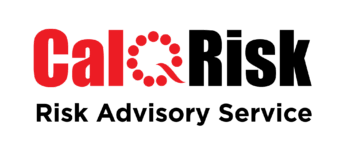Managing the Pandemic Scenario – 20 Things to Consider
It was one of those risks identified as Low Probability and High Consequences that everybody hoped wouldn’t come to pass “on my shift”. Well, a pandemic is here, and it’s serious.
It’s never too late to consider mitigation actions to “lessen the severity” of an evolving event. That’s all part of risk management. So, here are some ideas that might help you and your organisation to cope a little better in these troubled times.
Communication
1. Nominate a “Pandemic Coordinator” (and alternate) to gather information from reliable sources regarding the pandemic and your organization’s evolving arrangements, and to communicate this to all stakeholders on a regular basis.
2. Use the Internet and communication tools such as Zoom, WebEx, GoToMeeting, Skype, etc. to maintain strong communication with employees, customers and suppliers.
3. Identify a “Leader” (and alternate) in each department/region who will act as the Go-To-Person and link between the executive team and their department/region.
4. Communicate with your customers! Reassure them that you are still there for them, albeit with limited resources.
5. Executive Team to meet (virtually) on a daily basis to assess status and issue update, including any changes to plans for the coming week.
People
6. Review who may have recently been in contact with possibly infected persons and request that they “self-quarantine” until they can be considered “clear”.
7. Make a decision on who should/may work from home – who has reliable connectivity?
8. Be flexible with working hours – let some start earlier, work later, take longer breaks in the middle, especially if working from home.
Technical
9. Consider enabling/requiring Two Factor Authentication (TFA) for all remote workers.
10. Ban the use of public Wi-Fi; it is not secure and the risks are even higher now.
11. Consider how a remote site with good, dedicated, internet connectivity might provide an option for a number of staff when residential connectivity is poor or absent.
12. Freeze IT (no changes allowed) or at least permit only “critical” changes.
Operational
13. Draw up a list of non-critical tasks (i.e. month-end, internal reporting, pipeline report, weekly reports, etc.) and suspend or delay.
14. Stay informed on the state of affairs at key suppliers and partners. Be ready to take action if they have a delivery/supply problem.
15. Be aware of contractual obligations and to what extent a force majeure will excuse you from an obligation to supply/deliver a product/service.
16. Keep aware of advice from trade organisations, government and health authorities, and consider it in your decision-making.
Financial
17. Keep aware of any payment obligations (including payroll) and ensure payment coverage.
18. Review current/standing authorisation schemes for payments and agree a provisional extension of each list/panel in the event of individuals becoming unavailable.
19. Maintain a Cash Plan and arrange for borrowing/draw-down in the event of no or reduced cash collections.
20. Review Business Disaster Insurance policy to confirm cover (if any) is included for a pandemic scenario – i.e. loss of income, increased cost of working (ICOW), etc.









